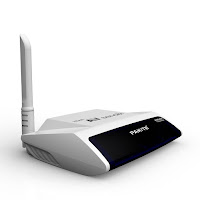Official site: www.pakite.com. How To Guides
Follow: Flickr(Phones Watches) . Flickr . Youtube(Watches) and QQ live(Electronic) online.
Wednesday, February 1, 2017
Saturday, January 28, 2017
How to Avoid Distortion in A/V Transmitters
How Audio/Video Transmitters Work
Broadcast Frequencies
Broadcast Range and Signal
Antenna Types
Using Customer and Expert Reviews to Choose an AV Transmitter
Thursday, January 26, 2017
How to make Cable to TV by Wirelessly connect
Choose Optimal TV Placement
Connect the Wireless Transmitter to the Cable Box or Outlet
Connect the Wireless Receiver to the TV
Adjust the Signal
Install an IR Extender for the Remote Control
Thursday, January 5, 2017
HDMI/SDI Wireless AV Sender for photograph and television
AV Signal from
set top box to TV,
so both Audio and
Video will be transmit
at the same time without latency.
It's the 'worth the money' wireless hdmi.
Recommend reading:
PAT-260 Wireless Strong Penetration A/V Transmitter from PAKITE
Zero Interference Wireless A/V Sender
Transfer a Wireless TV Signal
Tuesday, January 3, 2017
Family av friend
Most families own not just one television, because there are multi rooms in their house. But they do not wish to buy multi cable box(set top box) and pay the month fee on it, and running many wires in room.
So, the HDMI av sender(for input and output device with HDMI port) must be a good friend of them. Let's see what benefit it has.
1)Place your TV anywhere you like
Watch your favourite movie in your bedroom, cheer for your favourite football team in the garden or play your kids videos in their room while you’re having dinner with your friends downstairs.
Why be limited to one room when you can have the freedom to enjoy anywhere you like? The Wireless HDMI Sender connects your AV devices and lets you control them from a different room. The signal quality stays optimal, even through a wall or floor.
2)TV to TV without running cables
Put an end to threading wires through your walls at home. Connect your AV devices like DVD/STB wirelessly and enjoy wherever you like. Experience full AV quality with no strings attached! The HDMI av signal will be transmitted from transmitter to receiver wirelessly.
Tuesday, December 20, 2016
How to Install your Wireless Cable TV
Connecting Your Wireless Cable TV Box
Setting Up the Wireless Cable TV Box
Monday, December 19, 2016
Did you have HDMI Wireless AV Sender?
For Clients : HDMI Wireless AV Sender will be higher cost than SD Wireless AV Sender, SD Wireless AV Sender(what is it?) unit Price approximately $30-$60 in the located market, but HDMI Wireless AV Sender EXW Price based on MOQ 1000 sets will be $150 -$190, so it's too expensive for normal clients.
Form Seller:$150 per sets as prime cost is too high, that will make HDMI Wireless AV Sender market become small, it will no profit for the seller. Besides, at the first , all the buyer is hard to accept the high cost than SD Wireless AV Sender.
Thursday, December 1, 2016
Wirelessly Send Your Cable TV Signal to Another Room
Wirelessly Send Your Cable TV Signal to Another Room
Sources: CNBgear . Wirelessly Send Your Cable TV Signal to Another Room
With wireless being the norm for so many of our electronic devices
today, it’s pretty surprising to me that the standard way to connect a cable box to your TV is still with physical cables. And the surprise
turns into annoyance when I want to put a TV in a room where I don’t
have a cable outlet.
I had this situation when I bought my current house. I wanted to put a
TV in my living room but there was no outlet there and neither option
for putting one in—running the wires along the ceiling and floorboards
inside the house or running them over the roof on the outside—was
desirable.
Fortunately, after doing some research, I found the PAKITE 8 Channel Remote Wireless Video Transmitter & Receiver System(known as av sender, and one set av sender contains a transmitter and a receiver or two receivers), which sends the
cable TV signal wirelessly from the cable box in my bedroom to my living
room TV. Since then, I’ve upgraded my system from the PAT-580 model wireless HDMI,
which has a single input and support transmit HDMI signals wirelessly by 300 Meters, but it's output resolution is 720x576P, not is 1080P, but I found it's very ok when I watch the TV shows. And their after services is very good!
Note: These systems can also be useful even if you
have them in the same room as your TV, but connecting devices with a
cable isn’t ideal, e.g. if the TV is mounted on the wall.
Recommend reading:
PAKITE Brand HDMI Wireless A/V Sender - feature
PAKITE Brand HDMI Video Sender - Parameter
PAKITE HDMI Video Sender - Advantage
Wireless digital/analog TV sender | PAKITE
PAKITE Wireless IR Extender PAT-433
Thursday, November 10, 2016
What is HDMI Wireless A/V Sender? | PAKITE
Thursday, September 15, 2016
What is the Wireless Bridge between Satellite Receiver and TV?
Tuesday, September 13, 2016
Coming HDMI Wireless Audio Video Senders
recommend reading:
Transfer a Wireless TV Signal | PAKITE
Wireless HDMI Connection | PAKITE
The difference between Smart series and Wireless series tv sender | PAKITE
What is HDMI Wireless A/V Sender? | PAKITE
My family use it, and it's very good wireless transmit device











